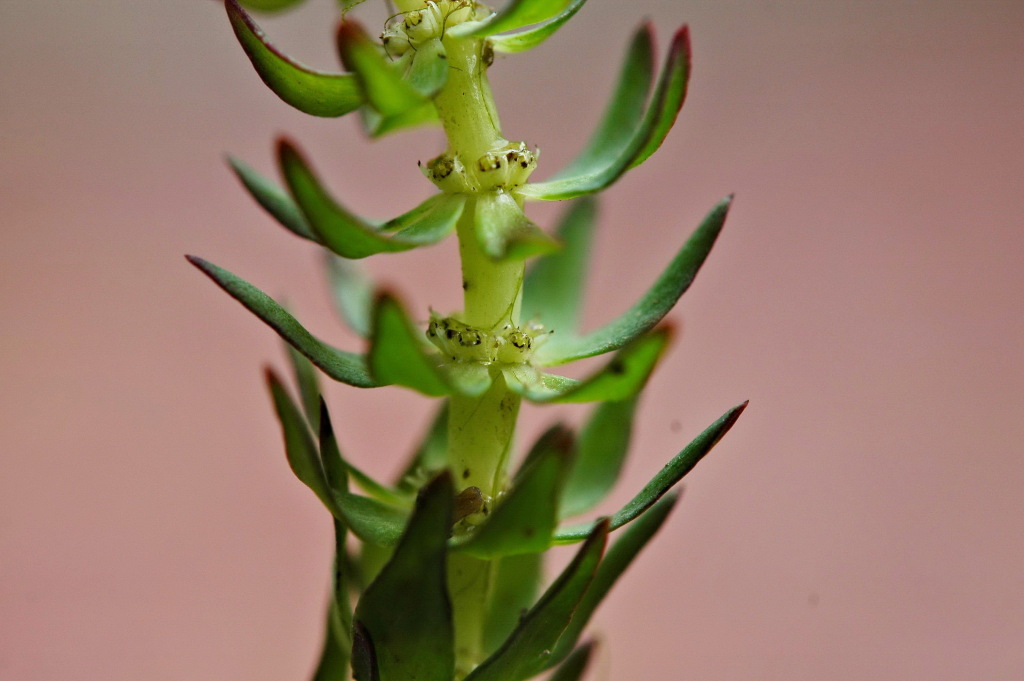Myriophyllum caput-medusae
Orchard Coarse Water-milfoilPerennial aquatic herb; stems 0.3–2 m long, mostly 3–4 mm diam., rooting mainly at the base, emergent parts much branched. Leaves dimorphic, in whorls of 3–5; submerged leaves ovate, mostly 12–20 mm long, pectinate, with 16–20 pinnae; emergent leaves oblong to ovate, mostly 6.5–8 mm long, alternate towards apex, glaucous, sometimes purplish, margins entire. Bracteoles linear, 0.7–0.9 mm long, cream to pale green; flowers solitary, sessile. Male flowers: sepals 4, triangular, c. 0.15 mm long; petals 4, 2.1–2.6 mm long, yellow to reddish, caducous; stamens 8. Female flowers: sepals absent; petals vestigial; ovary 4-celled, styles clavate, stigmas red. Fruit shortly cylindric, olive-brown; mericarps cylindric, 1.4–1.5 mm long, rounded, densely spinulose, with an apical collar. Flowers Oct.–Mar.
MuM, Wim, VVP, VRiv, MSB, RobP, MuF, GipP, OtP, WaP, Gold, CVU, DunT, NIS, EGL, EGU, WPro, HSF, HNF, OtR, MonT. Also SA, NSW. Scattered widely throughout much of Victoria particularly along the Murray River and its tributaries. Grows in lakes, billabongs and slow-flowing watercourses.
A distinctive species closely allied to Myriophyllum porcatum, from which it is distinguished mainly by its fruit ornamentation, emergent leaf shape and arrangement, and its perennial lif cycle (Orchard 1985). The distinctive spines on the mericarps are not apparent except in fully mature fruit.
Reported to be an occasional weed in smaller irrigation channels in Victoria and, less commonly, in New South Wales.
Jeanes, J.A. (1996). Haloragaceae. In: Walsh, N.G.; Entwisle, T.J., Flora of Victoria Vol. 3, Dicotyledons Winteraceae to Myrtaceae, pp. 887–908. Inkata Press, Melbourne.
 Spinning
SpinningOrchard, A.E. (1985). Myriophyllum (Haloragaceae) in Australasia. II. The Australian Species. Brunonia 8: 173–291.



